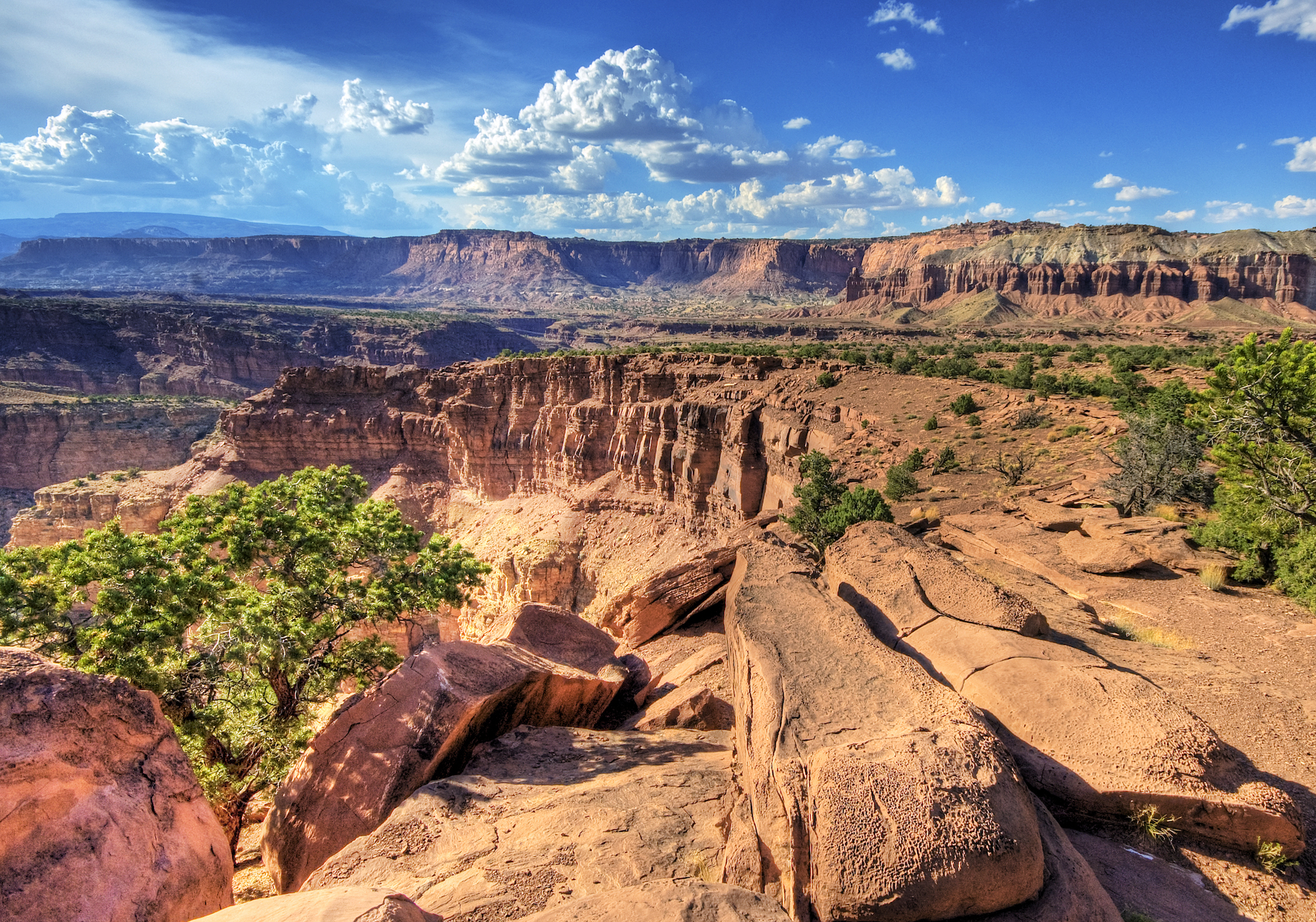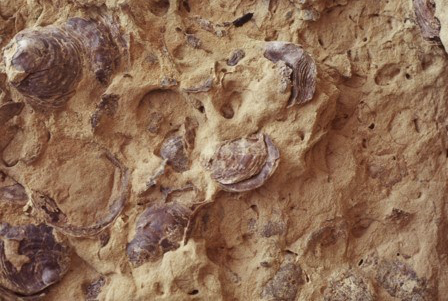

Figure 5.2–1 – The main photo shows a view of Capitol Reef National Park (Utah, USA), which is nearly 1,000 kilometers inland from the nearest ocean and about 2 kilometers above sea level. Yet many rocks in Capitol Reef, such as the one in the smaller photo, contain fossils of oyster shells, telling us that this region was once beneath the sea. Credit: (main photo) Wolfgang Staudt; (fossil photo) National Parks Service.
People throughout history have noticed that you can often find seashells in surprising places. For example, Figure 5.2–1 shows fossilized oyster shells in Capitol Reef National Park (Utah, USA), even though this park is nowhere near an ocean and is high above sea level. So how did the seashells get there?
Way back in 540 B.C., a Greek philosopher named Xenophanes recognized seashells on mountain tops and correctly guessed that this meant the mountain tops had once been underwater. In this section, we’ll explore some of the major geological processes that shape our world and that can move a region that was once an ocean to high above sea level. We’ll also see how and why some of these processes can occasionally be dangerous to us.
Section Learning Goals
By the end of this section, you should be able to give general answers to the following questions:
- How do continents differ from oceans?
- What processes shape continents?
- What dangers do geological changes pose?
Before you continue, take a few minutes to discuss the above Learning Goal questions in small groups or as a class. For example, you might discuss what (if anything) you already know about the answers to these questions; what you think you’ll need to learn in order to be able to answer the questions; and whether there are any aspects of the questions, or other related questions, that you are particularly interested in.
Journal Entry
Geological Dangers
Have you ever personally experienced a sudden geological event, such as an earthquake, a landslide, or a volcanic eruption? If not, talk to your family and friends, and see if you can find someone who has, and ask them to describe what happened and how it affected them. Then write a journal entry in which you describe the geological event and the consequence it had for you or for the family member or friend who told you about it.
This journal entry is designed to help students see that geological events have direct impacts on them. Depending on where you live, many students will have experienced such events themselves. If not, the students should be able to report stories from family members or friends.